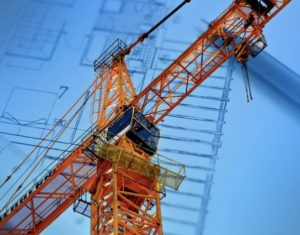If you own a company in the construction sector, it's essential to implement efficient management of your equipment fleet. Whether you have a dozen or a hundred machines, pieces of equipment or pieces of machinery, it's essential to the smooth running of your worksites, to optimizing the use of your resources, and to reducing your costs and delays. Here are a few tips on how to improve your fleet management.
You will develop a short- and long-term vision by anticipating the equipment needs of your projects and evaluating existing resources. This overall strategy will ensure that your equipment fleet is adapted to the specific requirements of each future project.
You also need to take into account the costs associated with your management, whether these relate to equipment acquisition or rental, as well as everything to do with servicing, maintenance and even storage. Paying close attention to project deadlines guarantees equipment availability. The same applies to the need for skilled labor. If necessary, you can set up training courses or call in outside service providers. All this will enable you to make the right decisions.

To save on initial costs, you can also rent machines or tools for specific projects.
Worth noting Fuel accounts for between 15% and 30% of the total expenditure generated by a fleet of equipment.
To manage your equipment fleet, you first need to put it away. Earthmoving machinery, quarrying equipment, various hydraulic shovels, etc. : your equipment must be classified by category and sub-categoryeven if you don't have much. This way, for each job, you'll have an overview of your fleet, know whether you have everything you need, and whether it's worth renting a machine.
In order to extend the life expectancy of your construction equipment, avoid costly breakdowns, and ensure the safety of allit's important to plan regular maintenance. Prevention is the most economical solution. As a maintenance history, detailed records of interventions on each piece of equipment are carefully kept. They include maintenance dates, parts replaced and amounts paid. When reselling a machine or tool, they are a real guarantee of seriousness and quality.
Good inventory management reduces storage and equipment maintenance costs. This requires an inventory of available machines and toolsIt also means anticipating future needs and eliminating unnecessary surpluses.
To boost productivity and cut costs, it's essential to plan and organize the allocation of different pieces of equipment to jobsites, taking all their specific features into account.
Fuel consumption, operating hours, maintenance costs, performance indicators, etc. By analyzing all this information, you can assess the efficiency and profitability of your equipment. Thanks to this information, you'll know if any of your equipment is obsolete or needs to be reassigned.
Good accounting is essential for managing your worksite equipment. Costs linked to the purchase, use, depreciation and maintenance of equipment are recorded. They can be analyzed to optimize your company's profitability and productivity.
Managing your construction equipment manually is a complex task. Digital tools can make the task simpler and more efficient. Their use will boost your productivity and reduce your overall costs. Here's a selection of what they can do for you:
To support the productivity and sustainability of your construction business, it's essential to optimize the management of your site equipment. To ensure this, it's advisable to equip yourself with specific management tools that centralize and synchronize all useful data.